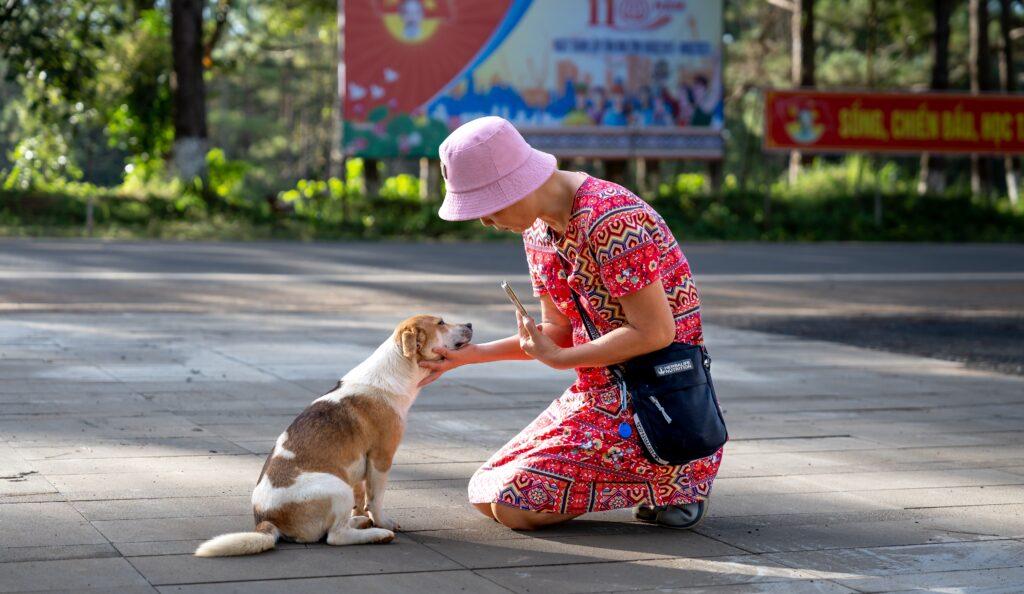You must socialize your dog with people if you want him to be hospitable to both friends and family. Here are some pointers for socializing your dog with others.
Congratulations! You’ve just added a new dog or puppy to your home, and both he and you are adjusting to life together rapidly. It’s possible that you didn’t consider how much or even how to socialize your new dog or puppy when you were adopting them. You must introduce your dog to new people if you want him to be hospitable to both friends and relatives.

A major deal—for everyone—is introducing your significant other to the family. It’s quite different when you socialize your dog to your significant other. Regardless of how hostile your family may be against a new spouse, at least they won’t bite, right?
It’s been “the two of you” when you share your life with your dog prior to welcoming a new person. Your dog will be used to being the “top dog,” so when you bring home a significant other, he can feel displaced and not be happy about it.
You can do the following things to make the introductions go more smoothly:
There’s a good possibility you won’t have time to set up these “neutral ground” conversations if you’re throwing a party or hosting houseguests. Your visitors should be aware that they are entering your dog’s domain and that it can take the dog some time to get used to them. These folks are strangers to your dog, so you should introduce them to him the same way you would any stranger. These first socialize interaction must be watched over and conducted as calmly as possible.
You can introduce your dog to home guests in the following ways:
You must maintain command of the circumstance. Keep your dog on a leash if you know he will become aggressive against outsiders who invade his domain or if you are unsure of his reaction. Allow visitors to enter, and once they are inside, let your dog start the introduction.
Allow your dog to greet your guests while keeping him on a short leash. Allow your guests to give him a tiny present if you are confident that he will accept it well. This serves to further solidify the association between stranger and treatment. Give your dog a treat when he behaves well and is calm.
Use the commands “sit,” “down,” or “stay” if your dog has been taught them when guests arrive at your home.
You should greet visitors first so that your dog can observe your interactions. Your dog will detect the pleasant interaction, will notice that you’re relaxed, and that might encourage him to relax, whether you shake their hands or embrace them.
Inform your visitors if your dog jumps. Inform your visitors that if your dog jumps on them, they should turn their backs to the dog and place their arms across their chests. Ask them to refrain from addressing your dog by name or even from saying “down.” The fact that they are turning away will deter the dog from jumping because he is not being petted and is being ignored.
You could choose to let your dog off his leash once the visitors have entered your home and he seems at ease with them being there. Keep an eye on his level of tension and provide your visitors with advice on how to speak with him.
Extreme caution must be used whenever children are present, whether you are bringing a new baby home, hosting visitors with children, or running into kids on the street.
Children squeal, run around, and sometimes yank the dog’s fur or unintentionally step on its paws or tail. A youngster running around may in some cases and with some breeds trigger the dog’s predatory instinct, which can have catastrophic results. Avoid interacting with dogs you don’t know too much. If you have children and are adopting a dog for your family, do your research to make sure the dog is “kid friendly.”
Here are some pointers to socialize your dog to kids in a secure way:
You, the pet parent, must pay attention to your dog and his body language if you want to foster positive connections between your dog or puppy and visitors to your home, people you meet on the street, or if you’re bringing home a new, little human. When he feels at ease, move cautiously. When your dog shows signs of anxiety, you should go more slowly or remove him from the environment and try again later.
Dogs strive to win over their owners. They might take some time to warm up to a stranger, but with time and encouragement, your dog and the people in your life will develop a close friendship that will last a lifetime.
If you are interested in any of our products please check out our store page and if you would like to join our Facebook page click here.